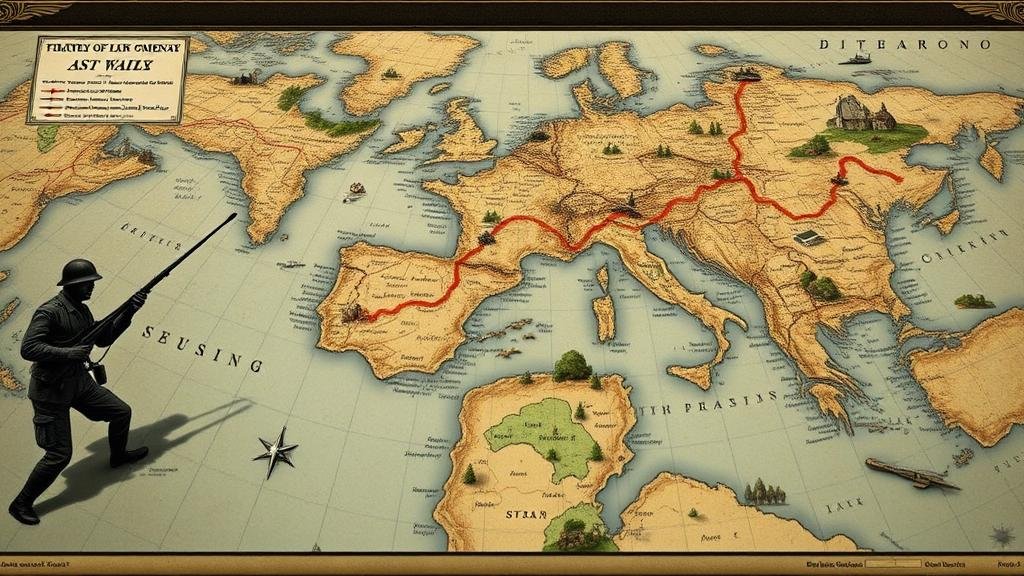Leveraging AI to Compare Historical Military Strategies with Battlefield Relic Maps
Leveraging AI to Compare Historical Military Strategies with Battlefield Relic Maps
The intersection of artificial intelligence (AI) and military history is becoming increasingly relevant in the modern analysis of past conflicts. By utilizing AI algorithms to compare historical military strategies with battlefield relic maps, researchers can derive insights that were previously challenging to obtain. This article examines the methodologies involved, offers examples from specific historical contexts, and discusses the implications of this technological integration.
The Role of AI in Military Historical Research
AI technology has revolutionized many fields, including historical research. In particular, machine learning and data analytics allow historians to process large datasets, identify patterns, and draw conclusions that may not be evident through traditional analysis. One of the most significant applications of AI in military history is the comparison of documented military strategies with spatial data derived from battlefield relic maps.
Methodology
To effectively compare military strategies and battlefield relic maps, a structured approach is necessary. This includes:
- Data Collection: Historical documents, military archives, and maps must be digitized for analysis. Reliable sources include national archives and military history journals.
- Data Preprocessing: The digitized data must be cleaned and organized, focusing on key elements such as troop movements, territorial changes, and engagement dates.
- AI Algorithm Development: Employ machine learning models to analyze strategies, such as decision trees or neural networks, which can highlight the effectiveness of various tactics across different terrains.
Case Study: The Battle of Gettysburg
The Battle of Gettysburg, fought from July 1 to July 3, 1863, serves as a pertinent example of leveraging AI for military analysis. By aligning battlefield relic maps with historical accounts of troop movements and strategies employed by Union and Confederate forces, researchers can extract valuable insights.
For example, AI can evaluate the defensive positions taken by General Meade against the attacks led by General Lee. By examining relic maps that indicate artillery placements and movement corridors, AI models can simulate potential outcomes of different strategies employed on those critical days.
Statistical Analysis of Strategies
Quantitative data can significantly enrich historical interpretation. For example, during the Battle of Gettysburg, approximately 93,921 Union soldiers faced roughly 71,699 Confederate soldiers. AI-driven models can analyze this disparity in troop strength against certain strategic decisions (e.g., the choice to take higher ground) to evaluate their impact on the battles outcome.
Applications of AI-Enhanced Historical Analysis
The integration of AI and military history has numerous applications, including:
- Educational Tools: Enhanced learning platforms for military students through interactive maps and simulation scenarios based on historical battles.
- Policy Development: Military strategists can use historical analysis to inform contemporary decision-making processes.
- Preservation Efforts: AI can assist historians in identifying and cataloging battlefield relics, assuring that they are preserved appropriately for future generations.
Challenges and Considerations
While the potential benefits of leveraging AI in historical military analysis are substantial, there are challenges to consider:
- Data Authenticity: Ensuring the reliability of the data used, as gaps or inconsistencies in historical records may affect analysis outcomes.
- Interpretative Bias: The risk that AI algorithms may reflect biases inherent in the data supplied, leading to skewed interpretations of military strategies.
- Technological Accessibility: Ensuring that the necessary AI technologies are accessible to researchers across different institutions and levels of expertise.
Conclusion
Leveraging AI to compare historical military strategies with battlefield relic maps opens up a new frontier in military historical research. By utilizing advanced analytical tools, researchers can uncover insights into military tactics and their successes or failures in specific contexts. While challenges remain, the benefits of such analytical capabilities are profound, potentially influencing both military education and strategic formulation in contemporary contexts. Moving forward, greater collaboration between historians and technologists will be essential for the advancement of this field.
In summary, the adoption of AI in historical analysis represents not only a methodological shift but also an opportunity to engage with military history in innovative and revealing ways.



